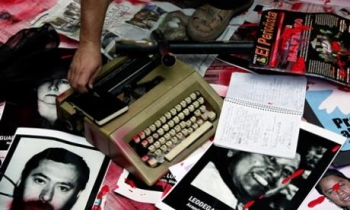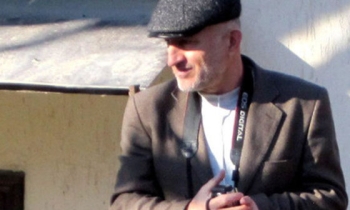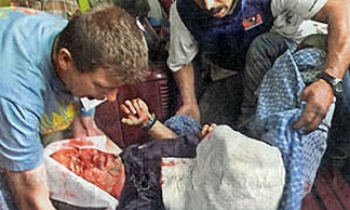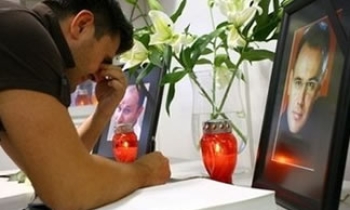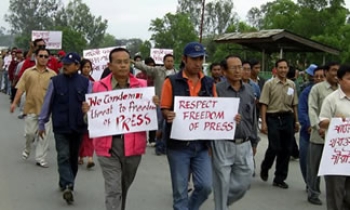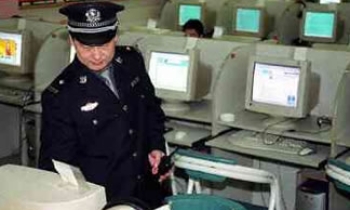During the rush hour of Thursday morning on 7 July 2005, four bombs exploded in central London killing 56 people including four bombers. Three bombs exploded on tube trains near Aldgate East, between King’s Cross and Russell Square and, at Edgware Road London Underground tunnels. A fourth bomb went off on a crowded No.30 bus in Tavistock Square.
News reporters were dispatched quickly to cover the event. Ahead of them were survivors who dispatched moving images of the devastation to media organisations from their mobile phone cameras. This was a relatively new phenomenon in news gathering. Although members of the public have supplied news bureaux with images and eyewitness accounts before, this was the first time news editors allowed phone-cam images of an event in Britain to become a key feature of national news coverage. The age of the Citizen Reporter was hailed as the next big thing in news.
But another major trend is the rise of emotionalism in news. Over the past decade, what I have termed 'Therapy News', the concentration on the emotional aspects of news events, has altered news standards. Judging by the first 72 hours of UK press and TV news coverage after the London bombings, this trend has gone further and altered news values for the worse.
Soon after the bombings, Roger Mosey, head of BBC News, discussed his journalists' coverage.
Arguing that viewers had thought that the amount of coverage by the BBC was about right, he admitted that one brief sequence shown on News 24 'should have been edited out' an image of a man being resuscitated in the immediate aftermath of the bombings, which he says was shown 'by accident'. But he failed to mention a report by Fergal Keane shown on the BBC News website on 7 July. In this, the reporter offered comments on what he thought people felt, rather than what people said they felt. Keane talked of cars abandoned near the Number 30 bus in the 'panic stricken aftermath' although it was unclear what this description was based on, since none of the eyewitnesses included in the report mentioned panic.
A focus on feelings can obstruct the process of gathering facts, which is supposed to be the basis for the reporter's impressions and conclusions. As a result, news reporters sound as if they are merely passive eyewitnesses offering their impressions of events, rather than active agents who gather and scrutinise evidence to ensure they report the truth. In this case, an ITN report that the abandoned cars had been damaged could suggest another explanation for why their owners had left them.
It is difficult to know how many survivors and witnesses were panicked or resilient after the London bombings since emotions are experienced internally and individually; they are not always expressed publicly. Tony Blair, the Prime Minister, praised Londoners’ stoicism, as did much of the national newspaper coverage.
Was this accurate?
A survey of all national newspapers for the first three days of coverage reveals that although emotions of resilience became front page newspaper headlines and were widely quoted throughout the inside pages, many more eyewitnesses were quoted talking about panic’ or similar emotions such as fear’. Sixty nine eyewitnesses referred to emotions such as feeling calm’. This compared to a larger number of people with negative emotions who were quoted. Forty five people were quoted referring to panic’ and 61 talked of emotions such as fear’.
That said panic is not just an emotion but one that goes hand in hand with an act such as the stampede of a crowd. Despite the reporting of eyewitnesses talking about panic’, only a couple of incidents of panic were reported. Given that hundreds of people were caught up in the bombings and had to be evacuated, describing the general emotional reaction of Londoners who survived as calm’ or stoic’ was accurate. However, this needs to be qualified. Although front pages used these terms, this belied the news reports inside newspapers which dwelt on negative emotions from eyewitnesses. This suggests that the press were accurate in their portrayal of survivors as resilient as well as wanting to relay the horror of what happened through survivors feelings, even if these accounts told us nothing new about the bombings.
Some press reporters started to look outside the official press conferences for other angles and challenge the official presentation of what had happened. On Day One (8/7) most of the national press focused on what had happened, the numbers dead and the survivors’ experiences. The day after the tragedy, only a few newspapers published information that differed from the general coverage. This suggested that their reporters had investigated events independently.
For example on 8/7, The Guardian carried a news report from a source who said that three controlled explosions had been carried out on "suspected devices"’. A named source was quoted saying that two unexploded bombs’ were recovered as well as mechanical timing devices’.
On the same day, The Times carried an article about reports from the US concerning other unexploded devices.
By Day Two (9/7) newspapers concentrated on naming the missing’ and the feelings of their family and friends. By Day Three (10/7), the Sunday newspapers looked for new angles. All the newspapers carried new information gathered over the preceding days emphasising different angles of the news story. About half focused on gathering information about who had died or been injured; the other half focused on an investigation of who was responsible for the bombings. Two out of nine national newspapers led their front pages with stories about who may have carried out the attacks.
The Sunday Times published a news exclusive that 'Leaked No 10 dossier reveals Al-Qaeda's British recruits’ alongside a photo of the suspected Madrid bomber. The Sunday Telegraph’s front page stated that Foreign terrorist cell was behind the London bombings’ alongside a photo of the Syrian suspect of the Madrid bombings. The Observer devoted its front page to new information about who may have carried out the bombings and more information about victims. The Sunday Express carried a piece about an evacuation in Birmingham and a survivor’s story. And the Mail on Sunday’s front page offered a foreign policy story declaring: Secret plan to quit Iraq.’
Reporters have not stopped investigating what’s new about events. But a more subtle change has taken place in terms of what aspect of the story reporters decide to investigate. During the media coverage of the London bombings the pressfocused on an investigation of the physical and emotional effects of the bombings as much as their causes. Relaying new information about victims, survivors and families is news.
Reporting information about people’s feelings is compassionate but less newsworthy. There is a place for feelings in news reports but today, however, they are being elevated as a key news value and reported upon day after day as if we need to have emotional news updates. Any follower of the news is asked to absorb an emotional journey not just a factual investigation.
In developing an emotional tie between news reader and the story, there is a danger that newspapers end up being more voyeuristic than journalistic. For example, the day after the bombings the Daily Telegraph devoted its front page to a broadsheet-sized photograph, and inside were 10 pages of news coverage, half devoted to images. The Guardian offered one photo on its front page and images displayed over five pages. The larger-than-normal display of images seemed designed to reflect the scale of the atrocity although the same images of the Number 30 bus and inside the tube tunnels were being reprinted in newspapers several days afterwards, even though they offered nothing insightful in factual news terms. Instead they offered a compelling emotional pull in to the story.
A few television news reporters went further still in creating an emotional connection between their audience, themselves and those caught up in the London bombings. The reporters started to become part of the story, filming themselves going around hospitals with those looking for their loved ones. At one point an ITN news reporter turned to the viewers to say she was going to phone the hospital for one of the grieving relatives, effectively reporting a news story about herself.
Some news organisations tried to become involved in other ways. For example, the Daily Mirror included an article in the news pages by a Relate family counsellor on 'how to tell your children the news in a sensitive way that doesn't terrorise them' , as if parents couldn't decide how to do that for themselves. Sky News had a ticker tape running at the bottom of the screen to help friends and relatives, nominating itself as a kind of alternative emergency service.
Therapy News has gone so far that news reporters are actually predicting what people will feel.
Alastair Stewart, presenter of ITV's London Tonight programme, claimed on the day after the bombings that 'many of us will be nervous about travelling on the bus' . Other reports told us what emotions to have, with the Sun's front-page on 9 July reading: 'Pray for them all.' Should news journalists be directing our emotions in this way?
This kind of reporting can also end up providing a safe version of the truth to protect people's feelings. In the first few days, journalists did not use the word 'dead', and instead referred to people as 'missing', despite the fact that grieving relatives knew that loved ones who were missing were probably dead. One relative interviewed on Channel 4 News said: If they're not on the list, they're dead.' A man was labelled 'missing' by reporters even though Yvonne Nash, his girlfriend, was interviewed saying he may be dead.
Therapy News has altered news values. We are receiving news stories about people’s emotions which we already know, can imagine or can never know. And, less information about events that we don’t know, could know and need to know more about.

